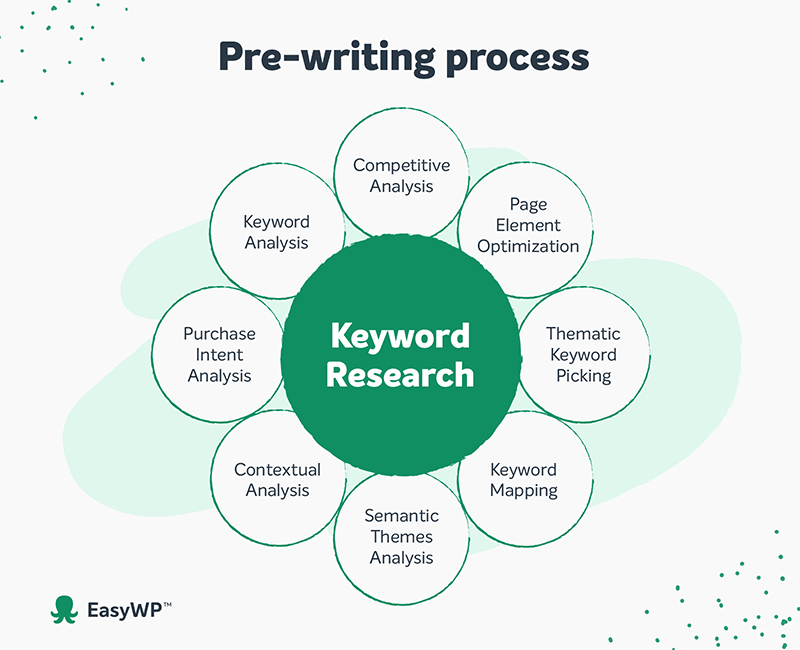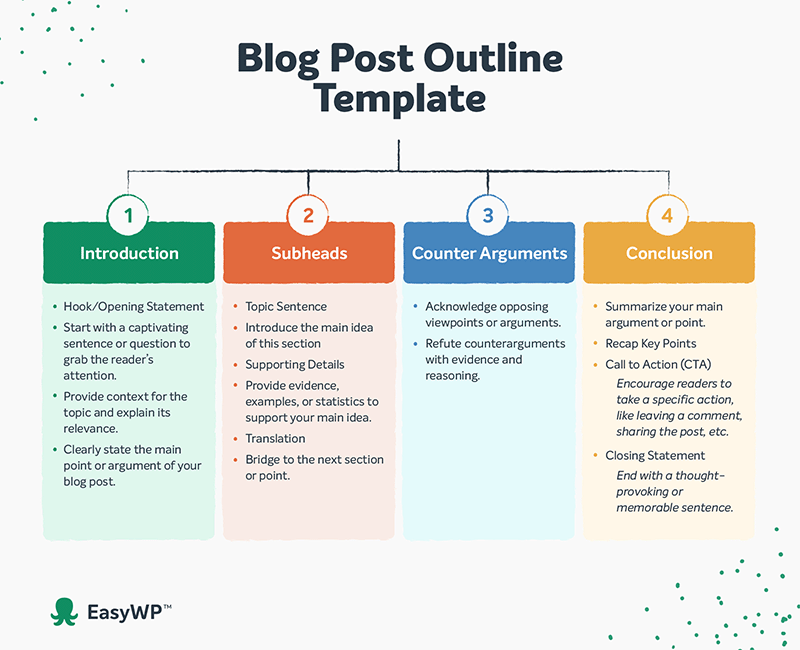How to set up a blog post checklist in 7 steps


Writing a blog post is easy, but writing a compelling article that appears in top search results, generates quality leads, and then converts those leads can be a challenge.
Unless your blog post is helping you achieve your goals, there’s no point in publishing them. However, if you know how to craft an article that resonates with your target audience, it can do wonders for your business.
There are various factors to keep in mind before you start drafting your content. To make this process easier for you, we’ve come up with a guide to setting up a blog post checklist before publishing your content.
So, let’s get started on the 7 steps.
1. Pre-writing preparation
It’s always a good idea to plan a blog post before diving into the writing stage.

The first step when drafting a blog post for your business is to conduct proper keyword research. This will help you identify topics that are currently trending in the market.
Keyword research also helps you learn what your target audience is searching for, what their problems are, and what solutions they are looking for.
Gaining insights about your target audience enables you to draft valuable content. There are various tools such as Semrush and Moz that can help you get started with your keyword research.
So look for one that fits your needs, then make a list of the keywords you want to use for your content.
Topic selection
The next step is to select a strong topic that people will resonate with.
Keyword research helps you understand what you want to write and allows you to come up with a good topic for your content.
Keep it sweet, simple, and attention-grabbing. Your title is the first thing your audience will see.
Try to make it exciting. Make your readers curious to find out more about the topic. This will make them click and start reading.
2. Content creation
The process of creating content can be divided into several steps. Let’s look at each of them separately.
Research
Once your pre-writing process is over, it’s time to start with research.
No matter how knowledgeable you are in a particular topic, there’s always something that you may not know. To come up with a quality blog post, you have to bridge this gap by conducting in-depth research so you can create valuable content for your target audience.
Outline
The next step is to create an outline for your post. Research helps you discover important information that you might want to cover in your post and lets you come up with ideas that your competitors haven’t mentioned yet.

Start noting them down. Pick up all the important points from the list and start creating your outline.
Draft
It’s time to draft your post. Once the outline is ready, drafting your post becomes super easy. From your research, you’ve already gathered the information and understood what you want to write in your post.
Start joining the dots to come up with a great post. Always remember to write in the second person narrative to make your reader feel like they’re talking to a real human.
Avoid using complicated words that make your post difficult to read or understand. This will take away the essence of the post and people will opt out easily. Keep in mind that you use words to communicate and make the other person understand your thoughts. You can’t do that when you use complicated words.
Optimization
Simply drafting your post won’t propel you to the top of Google. You have to optimize your posts to make them discoverable. This is true for the title and content body.
To optimize your title, ensure that you include your keywords. Keep it short, simple, and exciting. People should want to click on it simply by reading your title.
You can also try using psychological tricks by using FOMO (Fear of Missing Out), or try to make your users curious by asking a question.
For the article body, it’s important that you use relevant keywords evenly throughout your post. This will help you appear in search results more easily. Don’t forget to use alt tags in your images.

3. Formatting and visuals
Formatting your post to make it more appealing is a step you shouldn’t miss.
Make it scannable
No one wants to read a cluttered post. People love reading posts that appear easy to read. This comes through formatting.
One very effective way of formatting your posts is to break down your content into smaller sentences and paragraphs. You can make your post easily readable by simply adding some white space in between your content.
Also, remember that people won’t read the entire post. They will just scan through it to find the most important information.
So make it scannable by adding headings and subheadings. This will help your readers pick up the most important information without any struggle.
Images and graphics
Blog posts without visuals are boring. Add images, gifs, videos, infographics, etc., to make your posts more interesting.
However, visual content has other important roles to play as well. Videos and images help you deliver your message more easily by breaking up text, improving readability, and adding more dynamic content for your audience to digest.
4. SEO optimization
The next step is to optimize your post for search engines. Luckily, WordPress has made it super easy to optimize your posts. You just need to choose the right SEO plugins and you’re all set!
These plugins will prompt you to add a title, meta description, and a featured image. You can also set keywords and track if you’ve added them sufficiently in your post for SEO.
SEO plugins also make it easy for you to upload images and add alt tags. All of these increase the chance for your article to appear in the top search results of Google.

5. Add a CTA
Many writers often forget to add a CTA (Call–to-Action) to their blog post, which is a missed opportunity to get your reader to take action.
For example, let’s say you have an online store selling ergonomic chairs. You’ve written a blog post on how to fix your posture while sitting at a computer screen. You offer them the possible steps they can take, but have no CTA at the end.
There are many actions the reader may want to take at this point. They may want to look at a video exploring the possible exercises they can do, read more on the benefits of improving overall posture, or even browse your selection of specially designed chairs.
By not adding the CTA, you’ll leave your audience wanting more. Instead, they may go back to Google in search of more answers, wasting your opportunity to convert, or at least move through the sales funnel.
6. Edit and publish
It’s time to edit your post. Go through your post carefully and proofread it. You can use free tools like Grammarly to help you spot any grammatical errors you’ve made.
Keep an eye out for extra added space, extra commas, a missed full stop, or anything similar. Once you’re happy with your content, go ahead and publish it.
7. Social sharing
Now that you have published your content, you’ll want people to read. But unless your blog is popular, people won’t know about your content if you don’t promote it.
By sharing it across social media platforms, you can let your audience know that the post is ready for them to read. You should also consider using relevant hashtags to increase your reach.
Don’t forget to engage with your audience in the comments sections. This is a very good way of appearing in people’s feeds and grabbing more attention.
Ready to set up your checklist?
Creating high-quality blog content takes effort, but following a structured checklist can streamline the process. Preparation, drafting, optimizing, editing, publishing, and sharing are all key steps to include on your checklist. By diligently working through each one, you can craft posts that provide value to readers and meet your business goals.
With the right topics, keywords, and compelling content, your blog can attract an engaged audience that converts into customers. Consistently publishing excellent content not only builds trust and authority but boosts your search rankings so you get found by more of your target audience.
A thoughtful blog checklist removes the guesswork and ensures nothing falls through the cracks. Your content process will become more efficient over time as you refine your checklist. In the crowded world of blogging, having a repeatable framework sets you apart and leads to long-term success.
With this 7-step guide, you will be able to create content that resonates with your target audience, generates quality leads, and fuels your business growth.
So start implementing these steps today and watch your blog posts shine in the digital landscape. Happy blogging!
